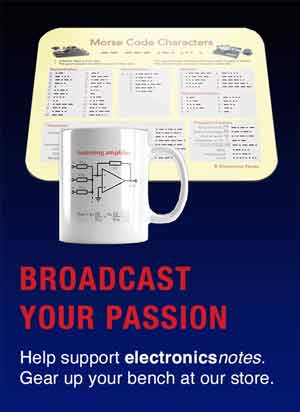Amateur Radio Voice Modes: analog & amp; digital
There are many different voice modes that can be used within amateur radio: analogue: AM, FM, SSB and digital voice modes.
Amateur Radio Voice Modes Includes:
Ham radio voice modes
Amplitude modulation
Frequency modulation
Single sideband
Digital voice summary
D-STAR
M17 digital voice
Voice communication is one of the most popular formats for amateur radio communication. It is easy and also very pleasurable talking to people and having direct a person-to-person contact via amateur radio.
Voice communications over the radio is technically terms as radiotelephony, although often it is referred to as phone, i.e. having a phone contact. This may further be abbreviated as fone in written communications like Morse or one of he digital modes where text is passed.
There are many options these days that can be used to make a voice contact or phone contact via amateur radio.
Several options available are listed below:
- Amplitude modulation, AM: Amplitude modulation was the first form of voice communication over the radio and uses the amplitude of the signal to carry the voice waveform. It was in use for many years, providing excellent performance for the day. However there are far more efficient modes that can be used, that require less power and bandwidth for the same level of performance. That said, a small number of radio amateur still use amplitude modulation, and most HF transceivers have the capability to transmit AM.
Read more about . . . . amplitude modulation use within amateur radio.
- Frequency modulation, FM: Frequency modulation has many advantages over amplitude modulation for many communications applications including amateur radio. Instead of modulating the amplitude in line with the voice, the frequency is changed. It is particularly useful for mobile communications because the signal strength variations caused by the location changes can be significantly reduced because only the frequency variations are of interest. FM is widely used for channelized communications on the VHF and UHF bands, as well as finding use on the Ten Metre (28MHz) band.
Read more about . . . . frequency modulation use within amateur radio.
- Single Sideband, SSB: Single sideband is a derivative of amplitude modulation. In essence, the carrier and one sideband is reduced and this significantly improves the spectral and power efficiency levels. Single sideband is the main voice mode used on the HF bands and it is also used to a small degree on the VHF and UHF bands.
Read more about . . . . single sideband, SSB, use within amateur radio.
- Digital voice modes: With the improvements in digital technology that have occurred over the past twenty years or more, digital voice modes can offer some significant advantages in terms of performance over analog modes. They are able to provide much better spectral and power efficiency levels. Often they can be copied at much lower signal levels than their analogue counterparts. Although digital voice can technically be used on any frequency, its main use has really been on the VHF and UHF bands where it carries similar traffic to that of FM. The main mode used include: D-STAR; DMR, and System Fusion or Fusion.
Read more about . . . . digital voice use within amateur radio.
The choice of voice mode that is used on the amateur radio bands is much down to personal preference. Although it is necessary to be cognitive of the relevant licence conditions, most licencing authorities allow at least the common digital voice modes. This means that there is a good choice of amateur radio voice modes that can be used
 Written by Ian Poole .
Written by Ian Poole .
Experienced electronics engineer and author.
More Ham Radio Topics:
What is ham radio
Callsigns
Morse code
Voice modes
Digital data modes
QRP operating
Operating awards
Codes & abbreviations
Ham bands overview
Operating via differnet propagation modes
Repeaters
Callsigns
Contact formats
Setting up a shack & buying equipment
Return to Ham radio menu . . .



